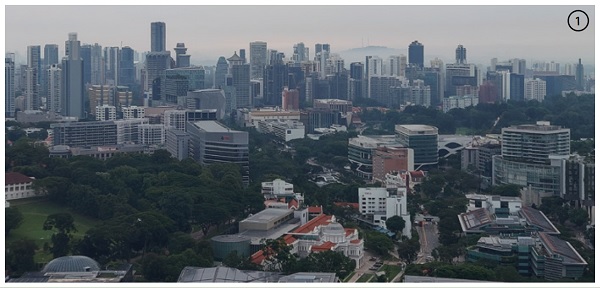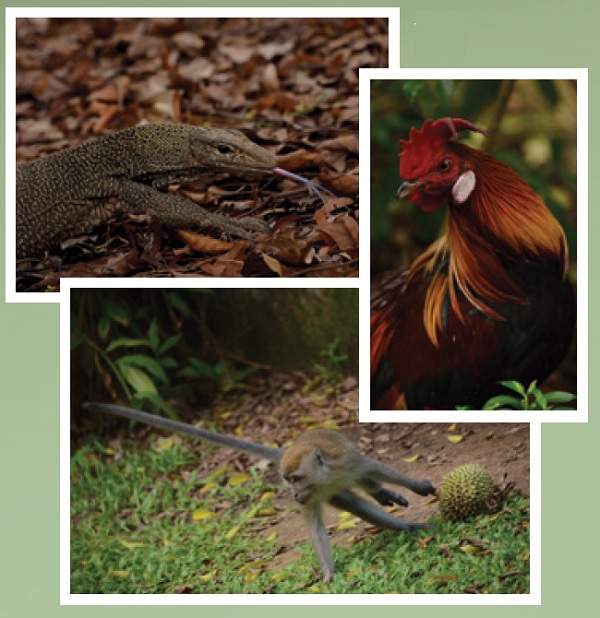Forced into a roundabout ascent, cars scuttle impatiently past the urban sprawl of Jalan Anak Bukit ("hill-child way"). Adjoining the mound: an unremarkable collection of HDB flats mingled with private condominiums, ageing shopping malls, a modern MRT station and seemingly-interminable construction works. A faint verdure yawns into view as past Anak Bukit emerges Bukit Timah, rising gingerly above the northern-bound carriageway. Through flickering glances from a busy commute, then, an unremarkable vista in a country of many trees, and over 350 public parks.
The perceptive traveller, however, might notice an accretion of hills in an otherwise flat country, although this shift is subtle. One might even make out the signs indicating "Nature Reserve", but these are obscure and easily missed, possibly by design. A great shame, then, for the unsuspecting traveller who inadvertently zips past one of this country's truly splendid places.
On the sublime
In a country once robed with sprawling hills and virgin rainforest, pristine greenery is remarkably difficult to come by these days. Of today's remaining woodland, a mere 1.92 km2 retains primary forest. That is, original climax vegetation representing untold centuries of cumulative, uninterrupted growth. Bukit Timah ("Tin Hill", although there is no tin) is our largest remaining tract of such rainforest, representing the Coastal Hill Dipterocarp Forest, also known as Seraya-ridge forest. These forests are dominated by the eponymous Dipterocarpaceae, a diverse family of lowland trees. Literally "two-winged fruit" in Greek, Dipterocarps are named for their peculiar winged seeds, exquisite aerofoils designed to spin as they fall.
The Seraya stand like sentinels upon these ridges, forest giants scaling easily 20 storeys over centuries-long sojourns. The trees are unmissable; mammoth trunks of well-fissured bark rise without branching, yielding unto frondescent crowns shaped like cauliflowers, an unbroken canopy offering welcome respite from the relentless tropical sun. The cooling shade can obscure floristic detail, accentuating what already seems to be a sparse understorey. But looks can be deceiving. In Southeast Asia, dense thickets characterise young rather than old-growth woodland. Belying scant undergrowth, an unparalleled biodiversity with 1,208 distinct species of native flora alone make up more than half the total on this island.
Primeval forest is a complicated space. Faced with her formidable immensities, it is difficult to escape a burgeoning sense of smallness – "a passion similar to terror" that, enigmatically, also seems desirable and even virtuous. It can accommodate both rapturous discoveries and the quiet patience of grief, indulging a myriad profundity straining words to their very limits. For eighteenth century philosopher Edmund Burke, these paradoxical evocations represented the sublime.
And the beautiful
What, then, is this exquisite terror? Burke distinguishes it from the merely beautiful. A single tree is beautiful, majestic even; Seraya stands on unmolested hillocks are sublime. The beautiful need only be pleasing and good; the sublime must rise above the will of men, defying even our greatest incursions. We are disarmed by the portent of an ancient vitality more powerful than ourselves, and yet we can trust to its apparent nobility, so we do not begrudge it. Instead, we find ourselves gently compelled in the face of our own impermanence. In this, I do feel very fortunate to live within cycling distance of the Bukit Timah forests, a place of solace through regular visits, but there is an obvious incongruity too.
Surrounding the virgin forest slopes; erstwhile excavations for granite stone, an abandoned tropical dairy farm, minor ruins from old kampungs, four major trunk roads encircling the hill. The forest has been, at times, pushed uncomfortably close toward a precipice of no return, producing today's patchwork of primary forests alongside younger regrowth. Jagged granite formations overhang abandoned quarries now infilled by earth and rain, a fitting epitaph to man's injurious disruption. Expropriated of vital canopy, the forest is exposed to drying winds and deleterious "edge effects". Of course, the quarry lakes have become resplendent waterscapes in their own right, but do they leave room for the sublime?
Stone relics line modern gravel paths, an evanescent remnant of sprawling kampung extant. Novice-friendly hiking tracks run alongside rock-hewn mountain biking trails, though beginners beware, as the gruelling Dairy Farm Summit Loop emerges too from these parts, better known to some as the devil's staircase. Disused cow sheds linger on as public education centres, introduced fruit tree species thrive along unfolding Trema Belukar, and these are not just marginal spaces. Younger woodland species flower far more frequently than Dipterocarps, providing invaluable ecological services to the myriad animals calling these forests home. Anthropogenic frontiers need not always be destructive. When done right, they can provide a space for a resurging natural resplendence. No word, I think, encapsulates this better than the eponymous "belukar", the Malay term for regrowth or secondary forest, a fitting memorandum for this patchwork nexus of the sublime and the beautiful.
Looking forward: a routine indulgence?
How, then, should we conceive a complex space like Bukit Timah? Sublimity adjoins frenetic cityscape, so readily accessible it can become routine. Primeval forest skirts alarmingly close to ruinous deterioration, though she also displays surprising resilience. Of course, Bukit Timah is but one of many beautiful places, but the sublime is a rarer prospect.
We remember Edmund Burke for delimiting the sublime from the beautiful. Lesser known, however, was his categorical disdain for the novel, a remarkable contrast with many travellers today. Novelty alone can only excite us once, turning quickly to "loathing and weariness". But mingled with the sublime or beautiful, a thing can continue to invigorate us even after it has become habitual. I think Burke can be excessively rigid at times, but his argument is worth revisiting, particularly in this time of profoundly altered mobility.
We so eagerly seek the fleeting delectations of foreign exoticism while we leave our own backyards undiscovered. There are not many sublime spaces left in this country, but what remains can offer us far more than the frivolity or rare luxury we often conflate with indulgence. Amenable to repeated visits, fringed by everyday griefs and triumphs, and with the beautiful, the sublime can acquire a comforting familiarity while continuing to inspire and revitalise.


